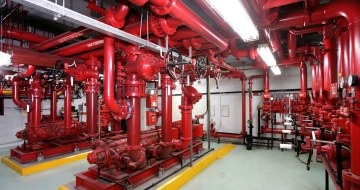For building owners, Operational Analytics provides a valuable opportunity to leverage data for enhancing the reliability and cost efficiency of air conditioning and mechanical services assets. By employing predictive data analytic tools and real-time monitoring, potential failures can be detected early, reducing unnecessary maintenance and allowing for more effective resource allocation.
This approach minimises system downtime, improves occupant satisfaction and supports informed decision-making regarding repairs and upgrades.
Operational Analytics can also enhance sustainability by optimising energy use, improve financial performance through better budget management, and assist with achieving regulatory compliance. Ultimately, this contributes to the property’s value and commercial performance.
In the built environment, data analysis entails inspecting, cleansing, transforming, and modelling data to uncover valuable insights and trends, and inform conclusions, and support decision-making. Analytics software continuously collects real-time building operational data from various sources, including Building Management and Control Systems, Energy Management Systems, access and security control systems, elevators, and other digitally controlled building services.
Integrating data from non-building related sources such as Computerised Maintenance Management Systems, Asset Management Systems and Financial Management Systems can enhance the depth and breadth of the data analysis and insights.
Operational Analytics can be used to improve building outcomes in three key areas:
- Automatic Fault Detection and Diagnostics to pre-empt failures
and reduce reactive maintenance costs.
- Building Energy Optimisation to reduce energy usage and achieve sustainability goals.
- Data Driven Maintenance to prioritise and minimise preventative maintenance expenses while extending equipment life.
Automatic Fault Detection and Diagnostics (AFDD, FDD):
Data analytics can help detect and diagnose the root causes of equipment faults, operational inefficiencies, and potential system failures.
By analysing operational indicators, impending equipment failures can be identified early and addressed proactively, supporting efficient management of reactive maintenance and repairs, and improving equipment uptime. Historical fault conditions can also help predict future failures.
Building Energy Optimisation (BEO, BEOP):
In-depth data analysis of operational parameters, historical performance, and energy usage profiles determines if systems and equipment are operating within their optimal design parameters.
Any performance degradation, which might be masked by the adaptive nature of the Building Management and Control Systems, can be detected
and addressed.
Data Driven Maintenance (DDM):
Data Driven Maintenance develops performance scores for individual equipment and ranks them against similar assets. This ranking, combined with condition status, maintenance and repair history, and knowledge of the equipment’s criticality to the facility operations, helps identify and prioritise discretionary preventative and corrective maintenance activities for the most
in-need equipment.

When introducing Data Driven Maintenance, various factors should be considered to determine the appropriate approach, type of system, and implementation method:
The Primary objectives for implementation.
These may include:
- Drive discretionary maintenance activities.
- Predict breakdowns, reduce downtime, and manage
operational risk.
- Reduce reactive repairs and in turn the total cost of ownership.
- Maximise plant life or manage asset depreciation.
- Identify poor performing equipment and reduce excessive energy consumption to achieve sustainability goals.
Differing objectives may require the adoption of different approaches and systems.
Other Considerations:
- Extent of current maintenance activities that are mandated for compliance versus discretionary preventative maintenance.
- Opportunity for reshaping discretionary maintenance activities.
- Data sources and ownership.
- Interaction of data collection and analytics processes
and applications.
- Integration of an analytics platform with the Building Management and Control System network.
- Accountability for driving analytics outcomes.
- KPIs for measuring and driving system performance.
The success for Data Driven Maintenance should be gauged by monitoring and evaluating performance indicators which reflect the objectives for the system.
These could include:
- Reduction in unplanned equipment and system downtime.
- Occupant comfort and satisfaction.
- Reduction reactive maintenance and repair cost.
- Total cost of ownership.
- Improved equipment lifespans.
- Reduction in energy usage and or energy demand.
- Compliance with regulatory standards.
A well planned and well implemented and managed Data Driven Maintenance program should yield a positive return on investment, significantly improving outcomes from building services maintenance operations.
For further guidance about Operational Analytics and Data Driven Maintenance, please contact:
Andrew Smith
National Leader – Building Technologies
A.G. Coombs Advisory
+61 3 9248 2700
asmith@agcoombs.com.au




